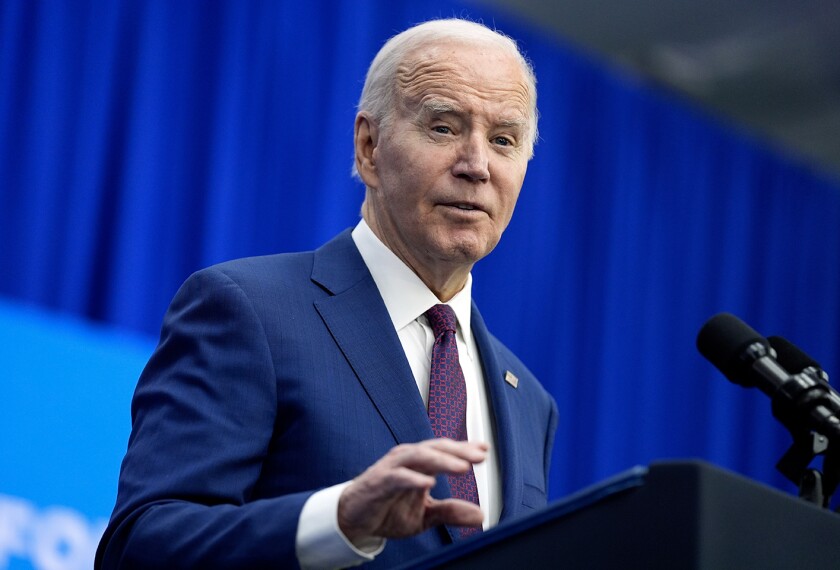Performance pay for teachers appears to be gaining favor with federal lawmakers of all political stripes.
Sens. Norm Coleman, R-Minn., Mary L. Landrieu, D-La., and Joseph I. Lieberman, IConn., put forth a proposal this month on major changes to the No Child Left Behind Act that includes incentives for states to look at performance-pay programs to attract teachers to underperforming schools.
Just days earlier, Democratic presidential candidate Sen. Barack Obama of Illinois made headlines when he supported merit pay before the annual convention of the National Education Association, a majority of whose 3.2 million members are teachers.
Observers say the deepening interest from federal policymakers in the concept at a time when the NCLB law is due for reauthorization is significant and reflects the intense national discussion among educators on the topic.
But what is also shifting is the blurring of the political divide. In the past, supporters of performance pay have tended to be largely Republican, including the Bush administration, which has given out several Teacher Incentive Fund grants to districts that have implemented such programs.
Gary Huggins, the director of the Aspen Institute’s NCLB commission, said policymakers, regardless of political affiliation, appear to be attracted to performance pay in increasing numbers “because you want to use every tool on board” to attract new teachers to the profession and to improve troubled schools.
“This is one of the fascinating ways in which NCLB has changed the world,” Mr. Huggins added.
The Coleman-Landrieu-Lieberman bill, the All Students Can Achieve Act of 2007 , is slated for introduction before Congress starts its August recess. Its proposals are based largely on a list of changes to the federal education law that the bipartisan NCLB panel crafted for the Aspen Institute, a Washington-based nonprofit organization.
The measure would require states to set up data systems to track students’ academic progress. The systems would, among other things, link student-achievement data to teachers, allowing states to measure teacher effectiveness.
Degrees of Opposition
The bill also would give grants for programs that change teacher compensation, which could include better pay for more effective teachers, and incentives for the best teachers to teach in high-need schools. To close the achievement gap, the proposal also calls for a school-based rewards system for teachers, administrators, and other staff members that work to improve the most disadvantaged schools.
“We are not trying to set up a merit-pay system. We are trying to give states an option,” said Stephanie Allen, a spokeswoman for Sen. Landrieu.
But Joel Packer, the chief NCLB lobbyist for the NEA, said the union is firmly opposed to the federal government getting involved in merit pay, even with a proposal that makes it voluntary for states or districts to join.
Even value-added models that track student growth over a period of years, he pointed out, are based on test scores and do not take into account the differences between individual students.
“Our position is that one or two test scores based on the NCLB test [requirements] are not comprehensive and a fair way to evaluate teachers,” Mr. Packer said.
The federal government should instead focus on providing hard-to-staff schools with a variety of tools and resources, such as high-quality mentoring programs and professional development for teachers, good working conditions, and smaller classes, he added.
How far the bill will advance in a field already crowded with pieces of legislation seeking changes to the No Child Left Behind Act also remains to be seen. Along with the powerful teachers’ unions, several members of Congress remain opposed to the concept of performance pay in varying degrees.
“You have to be careful with merit pay,” Edward J. McElroy, the president of the American Federation of Teachers, said recently, adding that he does not support systems in which principals decide which teachers are rewarded, or those that use student test scores.
Prominent Democrats such as Rep. George Miller, D-Calif., the chairman of the House Education and Labor Committee, have opposed performance pay based on student test scores.
After Mr. Obama’s speech to the NEA this month, Sen. Christopher J. Dodd, D-Conn., another contender for the Democratic presidential nomination, issued a statement saying a performance-pay system would “encourage teaching to the test and discourage teachers from working in schools with large numbers of disadvantaged students.”
Critics say no evidence yet exists that paying teachers for performance actually leads to gains in student achievement. Some research is under way, including a three-year study of the merit-pay system in Texas and a few other locations that began earlier this year at Vanderbilt University.
States have also not rushed to adopt such plans. So far, only Florida, Minnesota, and Texas have done so, but many districts in those states have been reluctant to join in, despite the lure of additional funds.
On the other hand, the idea has gained support from some unlikely quarters: For instance, some local union leaders, particularly those belonging to the Teacher Union Reform Network, a network of affiliates from the NEA and the AFT, have touted such plans. And in districts such as Denver and Minneapolis, the locals worked hand-in-hand with the districts to create performance-pay systems.
Heather Peske, the director of teacher quality for the Education Trust, a Washington group that favors changing teacher compensation said the grants proposed by Sens. Coleman, Landrieu, and Lieberman would give states the option of looking at differentiated pay.
“We have a lot of evidence now that teachers leave the profession because they feel they are not recognized for their efforts,” she said. “There are effective teachers in high-poverty schools who are wondering why there are teachers in low-poverty schools whose salaries are the same.”
“At some point,”Ms. Peske said, “we … are going to have to respond” to those concerns.




